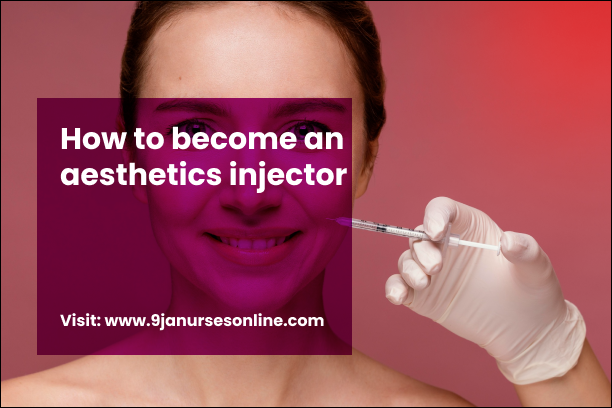Aesthetic injectors are in high demand, driven by the global aging population and an escalating desire to enhance our appearance, propelling the cosmetics industry to unprecedented heights. In this blog post, we will discuss on How to Become an aesthetic injector.
Opting for a career as an aesthetic injector is an appealing choice in today’s landscape, but the question remains: do you possess the qualities needed to excel in this field?
How to Become an Aesthetics Injector
Step 1: Attain Your Medical Degree and License:
To pursue a career as an aesthetic injector, obtaining a medical degree and licensure is imperative. Various medical pathways can lead to this role, including becoming a registered nurse, nurse practitioner, or physician assistant.
Depending on the chosen pathway, achieving both undergraduate and graduate degrees is necessary, along with successfully completing the national licensing or certification exam.
State-specific regulations governing the scope of practice in aesthetics vary, underscoring the importance of consulting your state board for accurate information.
Step 2: Acquire hands-on experience.
Integral to medical training, hands-on experience holds equal significance for aspiring aesthetic injectors.
There are two avenues for gaining this valuable experience:
- engaging in professional aesthetic training or
- certification programs and shadowing an established provider.
STEPS ON HOW TO EXCEL IN PROFESSIONAL AESTHETICS TRAINING
Step 1: Advanced Training Requirements
In addition to your medical degree and license, most state boards and insurance providers mandate additional aesthetic training or certification.
This may include proficiency in basic services such as laser treatments to build confidence through repeated practice.
Specialized training areas encompass injector prep, neuromodulator and filler injections, biostimulators, platelet-rich plasma therapy, and mesotherapy.
It is crucial to be aware of the varied regulations governing aesthetics in each state.
Step 2: Gaining Practical Experience:
To gain hands-on experience, aspiring aesthetic injectors can choose between professional aesthetic training or certification programs and shadowing established providers.
Opting for local training programs, often conducted over weekends or in two-day workshops, not only facilitates networking with established professionals but also reduces commuting, expenses, and time away from work.
It is recommended to read program reviews and course outlines before committing, ensuring that the chosen program aligns with your skill development needs.
READ ALSO: Understanding and Prioritizing Nurses Wellbeing in the scheme of healthcare
TOP AESTHETIC TRAINING PROGRAMS
Some reputable aesthetic training programs include:
- Botulinum Toxins and Dermal Fillers, Level 1 to 3, by the American Academy of Facial Aesthetics
- Botox and Dermal Filler Certification by Aesthetic Medical Educators Training
- Injection Anatomy by the American Medical Spa Association
- Botox Certification by the International Association for Physicians in Aesthetic Medicine
- Injector Preparation by Titan Aesthetic Recruiting
- Certificate Course in Aesthetic Medicine Level 1–3 by the American Academy of Aesthetic Medicine
- Level 1 to 3 Facial Rejuvenation and specialty workshops by Palette
Shadowing an Established Provider
Learning from experienced professionals provides valuable insights into skill development, facial anatomy, and networking opportunities. Clinical rotations during education or direct outreach to professionals through social media, professional networks like LinkedIn, or local beauty salons can open avenues for shadowing opportunities.
- Step 3: Networking
Building a professional network is integral to launching a career in aesthetics.
Connecting with local beauty salons, distributing business cards, and seeking mentorship opportunities through engagement with local injectors contribute to professional awareness.
Participation in aesthetic societies and attending relevant conferences, workshops, and events can also foster connections with clinics and peers.
- Step 4: Continuous Skill Enhancement
Aesthetic injectors must commit to ongoing education and training to stay current in the field.
This involves mastering facial anatomy, honing assessment and marking skills for filler and neuromodulators, and staying informed about new procedures and technologies.
Utilizing resources like YouTube for training videos and studying facial anatomy books further enhances expertise.
CONCLUSION
Recognizing that everyone starts with just one client, maintaining a positive outlook, and persevering through challenges are crucial.
Acknowledging that self-doubt is part of the journey, aspiring aesthetic injectors should focus on continuous improvement, building a solid practice, and cultivating a positive professional reputation.



